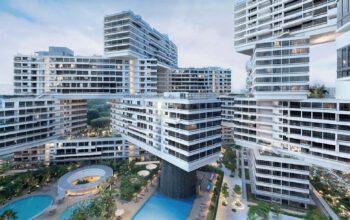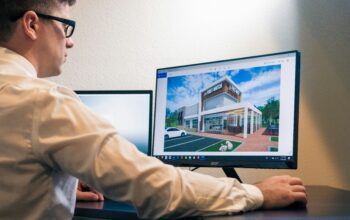Uzone.id – In 2023, Thomas Lane in Building magazine revealed that AI has the potential to automate up to 37% of tasks that architects and engineers usually do. The statement then sparked quite a terrible question.
“Can architects be replaced by AI?”
Artificial intelligence (AI) has shown great potential that will continue to grow in the coming years, including helping professional architects carry out their duties.
We still need human in architecture
In this industry, architects place a strong emphasis on architecture on creative ideas to create unique, aesthetic, yet functional urban and building designs. The design process involves high creativity, from the initial concept to the technical details.
In addition, architecture is closely related to other industrial sectors. Architecture is the beginning of a construction process, plays a vital role in property development, and often collaborates with building material manufacturers to develop innovative new products.
Seeing the complexity of this creative industry, it isn’t easy to imagine that AI will completely replace the role of an architect. AI targets routine tasks that are less creative, so the presence of professionals is still very much needed in this industry.
Boundaries that AI can’t cross in architecture
However, some limitations AI still needs to overcome to replace the role of an architect. First, AI can produce innovative images, but it still needs to imitate human creativity and intuition to create meaningful designs.
AI still needs to be made easier to understand complex social, cultural, and environmental contexts. On the other hand, architecture is not only about form but also involves social, ethical, and sustainable values.
While there are general concerns about the possibility of AI becoming highly sophisticated, many architects are also actively exploring how AI can be integrated into their practices.
In real life, AI has shown great potential in helping an architect complete their various tasks. Here are some of the great potentials of AI in the future:
AI helps architects in design creation
AI can generate various design options based on information provided by the architect, such as land area, building function, and aesthetic preferences.
The information summarized by AI allows architects to explore more design possibilities while also helping to optimize building structures to be more efficient and disaster-resistant.
AI helps analyze data
AI can help architects analyze relevant data such as climate, topography, and energy use to optimize building designs. AI can analyze topography and vegetation data to create harmonious landscape designs.
AI tools such as Autodesk Forma can extract urban information from open-access databases and help create mass studies by considering environmental data, floor area, shape, and building codes.
Also, AI can help estimate construction costs more accurately so that architects can make better decisions when selecting materials and construction methods.
Finally, AI can analyze BIM data, find potential conflicts or clashes, optimize schedules, and assist with project management activities, thereby improving coordination and reducing errors in the construction process.
AI helps with simulation and visualization
AI can help create realistic simulations of building designs. AI helps create various variations of building façade designs based on parameters specified by the architect.
AI can simulate how natural and artificial light will enter the building, allowing architects to optimize lighting and reduce energy requirements.
With AI, architects can design energy-efficient and sustainable buildings and get design modification recommendations that make building energy more efficient, reducing its environmental impact based on AI algorithms.
So, here the conclusion:
AI has shown its ability to generate design ideas and optimize building designs. However, human creativity and intuition are still needed. Until now, AI has been unable to match the creativity, contextual understanding, emotions, and ethics that provide cultural resonance and meaning in architecture.
However, the existence of AI can help improve human skills and free architects to devote their focus to higher reasoning, more creative exploration, contextual problem-solving, and realizing culturally enriching designs.














